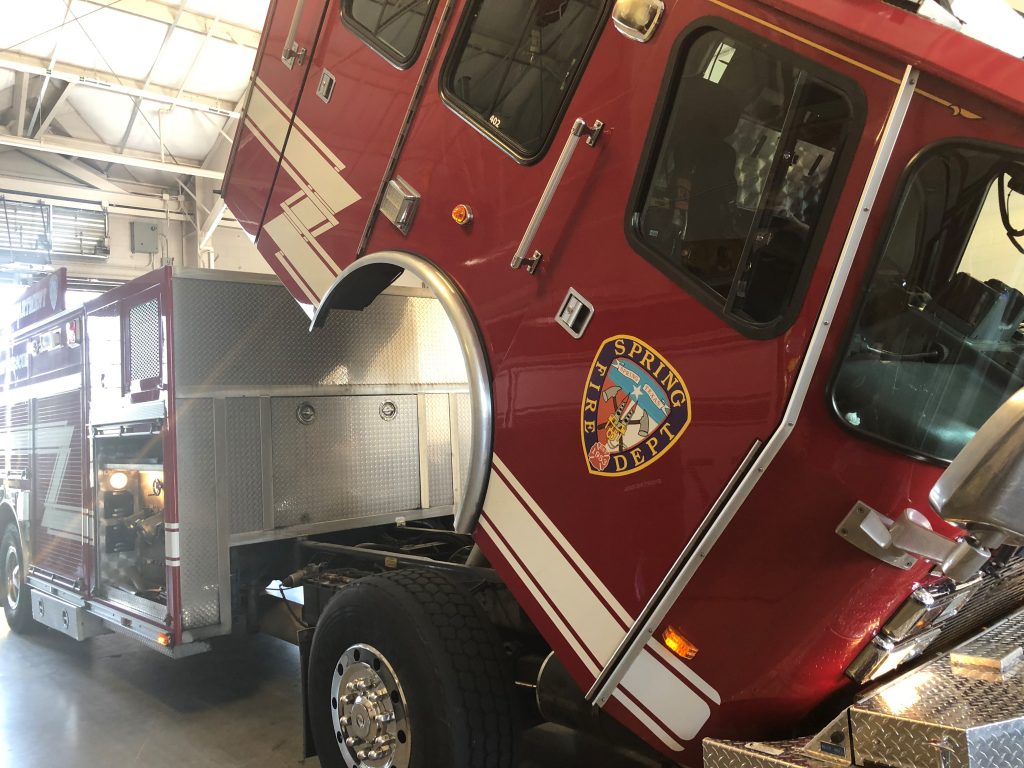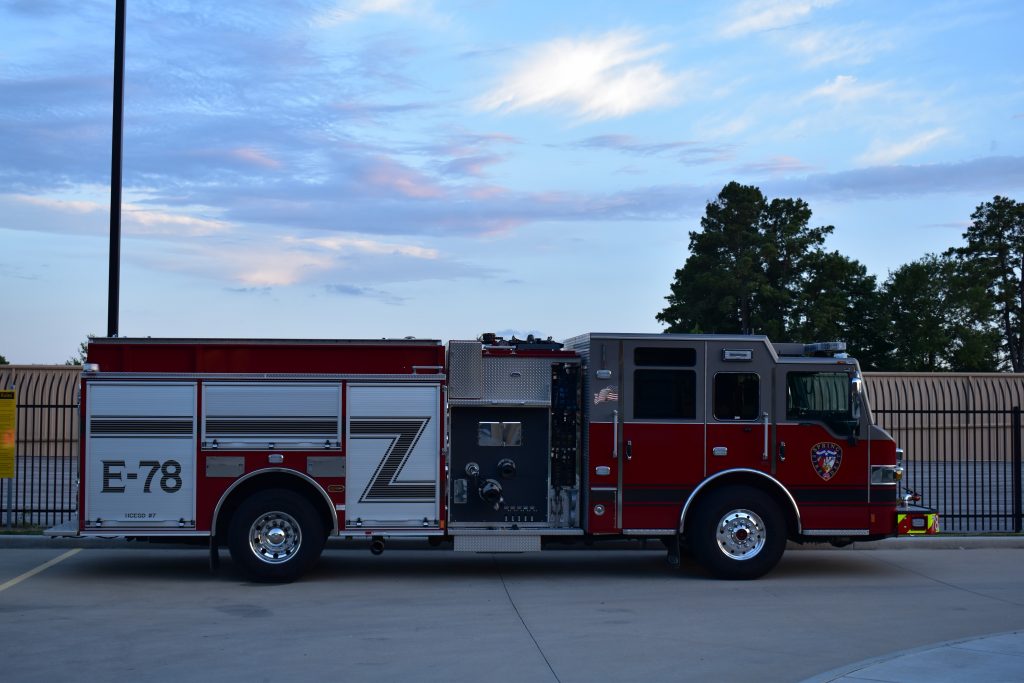Saving Money on Firetruck Repairs
by Hannah Falcon
The Spring Fire Department firetrucks are constantly running out to fires and rescues in the Texas heat, so it is no surprise that they can accumulate expensive repair needs. In an effort to save money while keeping the apparatus safe and well maintained, Spring Fire’s Emergency Vehicle Technician Red Haney does many in house repairs.
“(Spring Fire’s) maintenance budget is about a quarter million dollars a year, and since we do stuff in house we typically do not spend that much,” Haney said. “Before we started doing repairs in house, it was averaging between 300-500 thousand dollars a year to do repairs.”

Spring Fire does annual maintenance on all of the department’s emergency vehicles. But, firetrucks also come in for emergency repairs.
“Lately the main problem I’ve been seeing is air conditioning, it comes with the heat, but the way we run maintenance around here we keep all the big issues at bay,” Haney said.

When a firetruck is taken out of service to be repaired, the crew that normally responds on that truck uses a reserve engine.
“The reserve is a fire engine that was taken out of service. We kept it to use if a truck goes out of service we can out them in that reserve truck,” Haney said. “I absolutely think it’s important to have the reserves as back up. We typically see a truck go into a reserve three or four times a year.”

The length of a repair on a firetruck depends on how quickly Haney can get ahold of the parts needed for the repair. For example, even though the recent repair work on Engine 73 only took half a day, Haney had to wait for parts. Firetruck parts typically have to be ordered from the manufacturers in Florida or Wisconsin, but Haney finds local solutions whenever possible.
“For cost effectiveness I’m having it rebuilt locally,” Haney said. It’ll take an extra day, but it’s more cost effective that way,”

When Spring Fire opens its multipurpose facility, Haney will be able to move out of Station 78, where he currently does repairs, and work in a real shop designed specifically for firetruck repairs.
“We will have our own multi-bay shop in the new multipurpose facility, so we won’t be working out of a station anymore,” Haney said. “It’ll have a pit to do oil changes and under-vehicle stuff and we’ll also have three story high ceilings to be able to raise the cabs and put the truck on a lift in the air.”
Hannah Falcon is a sophomore Communication major at Texas A&M University. A Staff Writer and Life & Arts Editor for the Texas A&M Battalion, Falcon is spending the summer as a volunteer writer for Spring Fire Community News.

